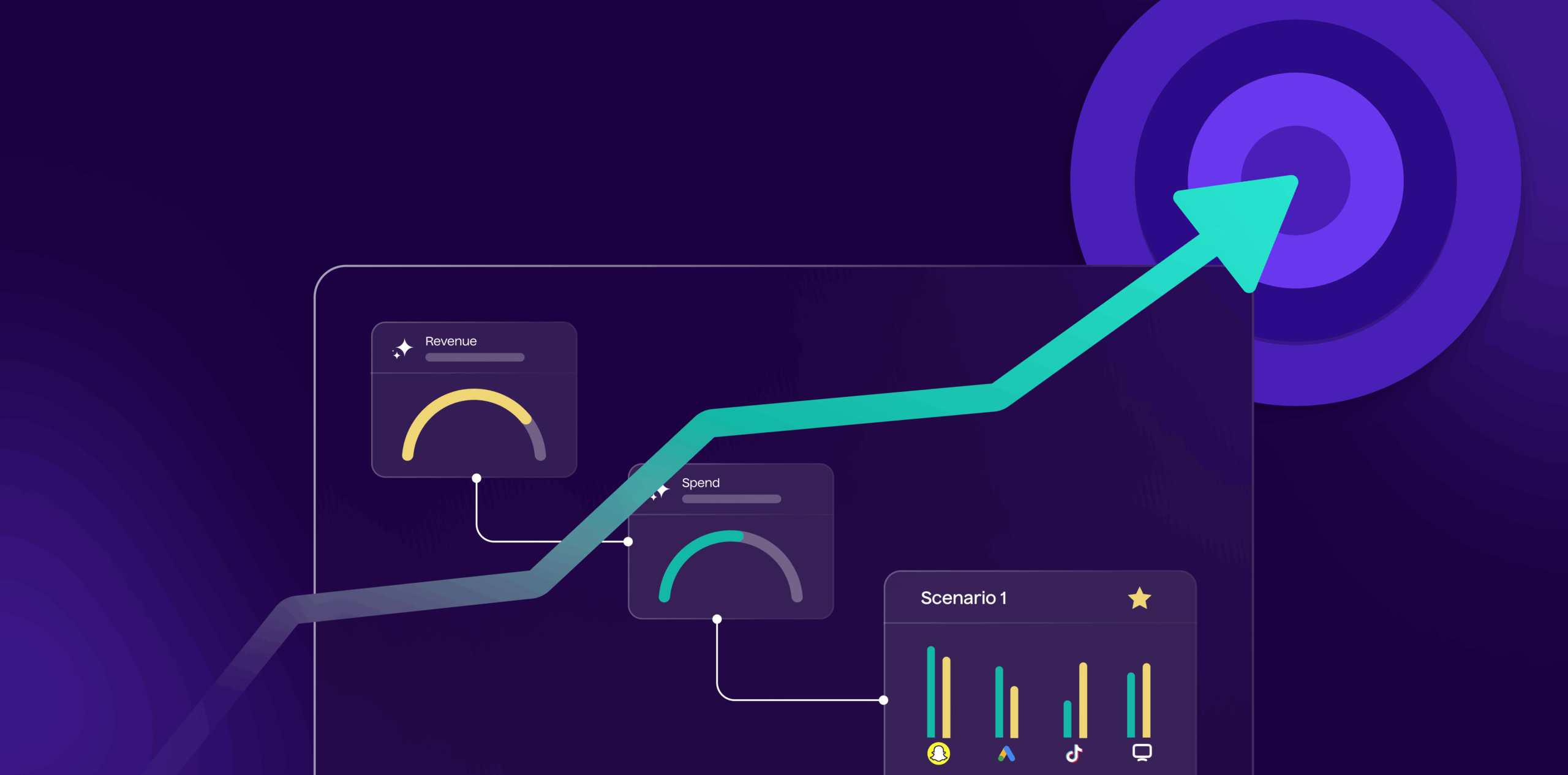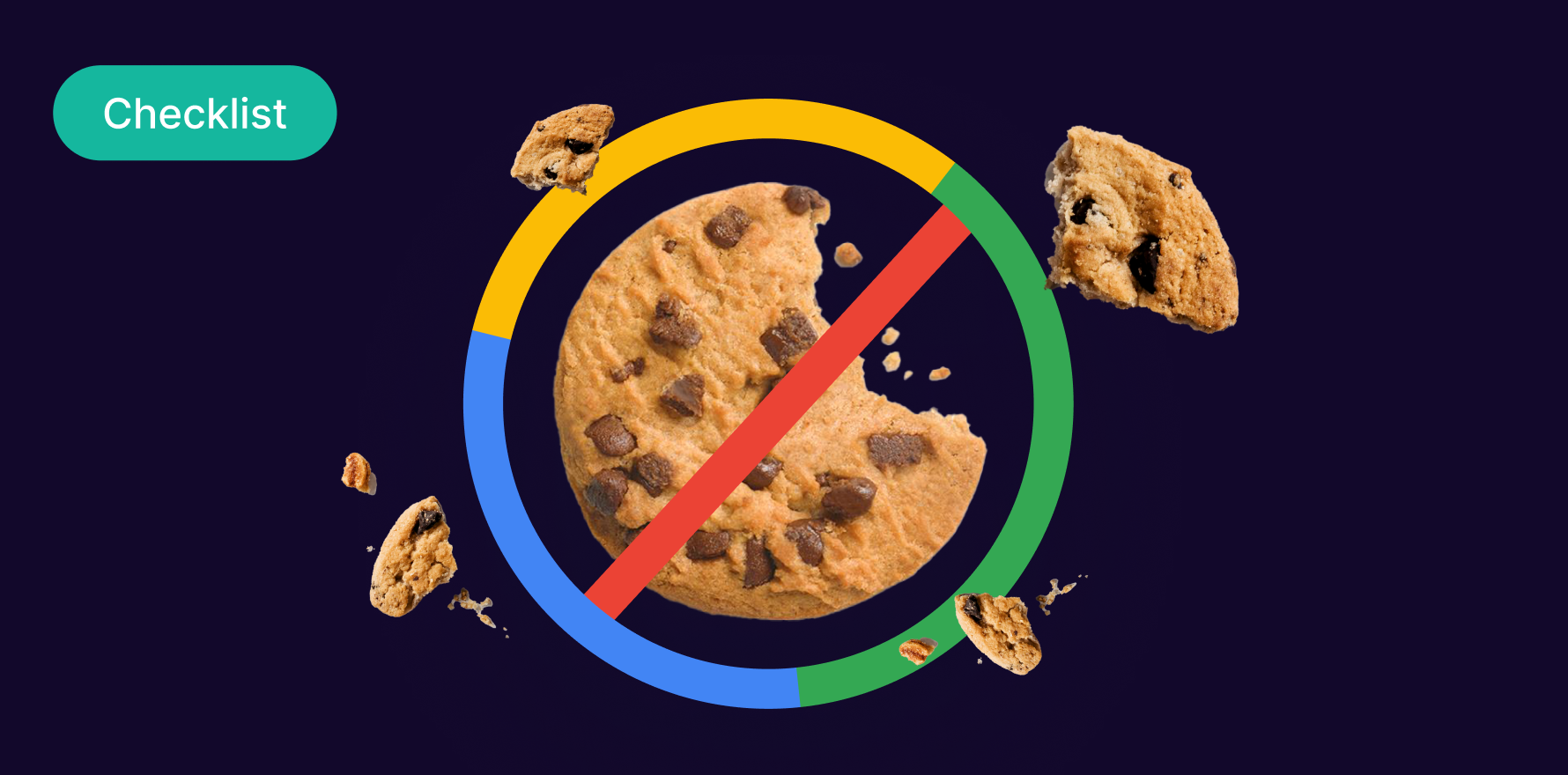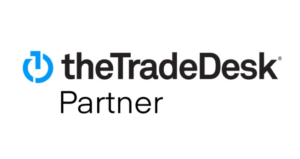Creating a robust marketing measurement plan is essential for any business aiming to optimize its marketing efforts and demonstrate the value of its strategies. By carefully identifying challenges, setting clear goals, and selecting appropriate key performance indicators (KPIs), businesses can better understand how their marketing campaigns drive revenue and customer engagement. With a structured approach, marketers can navigate through complexities like attribution, budget allocation, and measuring both online and offline campaigns.
This step-by-step guide outlines the process of building an effective marketing measurement plan, from identifying measurement challenges to ongoing optimization, ensuring continuous improvement in marketing performance.
Read More About: Marketing Measurement: A Guide to Models, KPIs and How it Works
How to Create a Marketing Measurement Plan? A Step-By-Step Guide
STEP 1: Identify the Marketing Measurement Challenges
Before creating a measurement framework, it is critical to recognize the obstacles that may hinder accurate tracking and insight generation. These challenges affect everything from decision-making to reporting accuracy, and must be addressed upfront.
1. Difficulty Identifying Incremental Lift
One of the most common challenges marketers face is not knowing which activities drive incremental lift. Often, marketers can’t differentiate between results caused by campaigns and those that would have happened organically. Without techniques like control groups, geo-split testing, or holdout experiments, it is difficult to quantify true campaign impact.
2. Unclear Ad Spend Effectiveness
Another common pain point is the lack of visibility into where your ad dollars are being wasted. The budget is spent across platforms such as Google, Meta, LinkedIn, and programmatic ads, but without proper attribution, it’s unclear which platforms are delivering returns and which are draining resources.
3. Inability to Attribute Revenue to the Right Channels
Many marketing teams struggle to determine which channels are actually driving revenue versus those that simply play a supportive role in the customer journey. This often leads to over-investing in channels that appear to perform well based on flawed attribution and under-investing in those that truly influence buyer decisions earlier in the funnel.
4. Lack of Clarity on Awareness Performance
Beyond revenue, businesses also struggle with identifying which platforms are generating brand awareness. Without tracking impressions, reach, video views, or brand search volume, awareness efforts often go unmeasured or underappreciated.
5. Measuring Offline Campaigns Like OOH
Offline campaigns such as out-of-home (OOH) ads add another layer of complexity. These efforts often lack direct tracking mechanisms, making it hard to measure their effectiveness without using supplementary strategies like geo-lift analysis, custom landing pages, or branded keyword monitoring.
6. Over-Reliance on Last-Click Attribution
Traditional analytics tools often operate in silos and rely too heavily on last-click attribution, which tends to favor lower-funnel tactics. This misrepresents the value of top-of-funnel awareness efforts and creates a skewed picture of campaign performance.
7. Attribution Model Confusion
Marketers face challenges with multi-touch attribution (MTA), particularly when different platforms claim full credit for the same conversion. Without a consistent attribution framework, it’s difficult to understand how all marketing efforts contribute to the customer journey.
8. Difficulty Allocating Budget Effectively
With unclear performance data, marketers struggle to allocate budget across channels and tactics. This leads to inefficient spending and missed opportunities for scaling high-performing initiatives.
9. Struggling to Justify Marketing Investment
Lastly, many teams find it hard to prove the ROI of their marketing efforts to senior stakeholders. Without a clear measurement plan that links activity to business outcomes, it becomes difficult to defend budgets and demonstrate marketing’s contribution to revenue growth.
STEP 2: Define Your Business and Marketing Goals
Once you have identified the key measurement challenges, the next step is to define what success looks like for your business and marketing efforts.
A clear understanding of your business objectives is essential before you can determine what marketing should support and measure.
Start by identifying high-level business goals, such as increasing revenue, improving customer retention, or expanding into new markets, and then break them down into specific, actionable marketing goals.
For Example,
If the business aims to grow revenue by 25 percent this year, your marketing goal might be to generate 2,000 qualified leads per quarter or to increase average order value through upselling campaigns. If the business is expanding into a new region, the marketing objective might focus on building awareness and reach in that market through targeted content, influencer collaborations, or regional ads.
Use the SMART goal framework (Specific, Measurable, Achievable, Relevant, Time-bound) to ensure your objectives are clear and trackable. A goal like “increase brand awareness” is vague, whereas “increase brand search volume by 30 percent in six months” gives you a measurable target to aim for.
STEP 3: Identify Key Performance Indicators (KPIs)
With your goals clearly defined, the next step is to identify Key Performance Indicators (KPIs) that will measure success. KPIs are the metrics that link your marketing activities to the outcomes your business cares most about, especially revenue generation. These indicators should reflect performance across key areas like efficiency, profitability, and incrementality.
While awareness metrics like impressions and reach are important, this step will emphasize metrics that directly tie to revenue, customer acquisition, and the overall impact of marketing efforts on sales.
These KPIs directly measure the revenue impact of marketing efforts, providing clear insights into how well your activities contribute to the bottom line.
1. Customer Acquisition Cost (CAC)
The average cost to acquire one new customer. CAC is a crucial revenue-focused KPI. It helps you understand the cost efficiency of your marketing and sales efforts. A lower CAC means you’re acquiring customers at a more cost-effective rate, which directly impacts your profitability.
Example: If it costs $100 to acquire one customer and that customer generates $300 in lifetime value, your CAC-to-LTV ratio (Customer Lifetime Value) is favorable, showing profitable customer acquisition.
2. Incremental Customer Acquisition Cost (iCAC)
The cost of acquiring a new customer that is directly attributable to marketing efforts, isolating the incremental impact of those campaigns. iCAC is important because it reflects the true cost of marketing-driven customer acquisition, excluding organic or baseline activity. It allows you to evaluate the effectiveness of your marketing spend and optimize accordingly.
3. Customer Lifetime Value (CLTV)
The total revenue a customer is expected to generate over their entire relationship with your brand. CLTV is one of the most important revenue KPIs. It helps you assess how much you can afford to spend on acquiring new customers, and also indicates how valuable each customer is over time. Maximizing CLTV is key to achieving sustainable revenue growth.
4. Return on Ad Spend (ROAS)
Revenue earned for every dollar spent on advertising. ROAS is an essential KPI to measure the direct effectiveness of your paid campaigns. A high ROAS means you’re getting more revenue for every dollar spent, which signifies a well-performing campaign. It’s a vital metric for optimizing your paid media spend.
5. Incremental ROAS (iROAS)
ROAS that focuses only on the incremental revenue driven by marketing activities, isolating the marketing-driven lift. iROAS is an advanced metric used to isolate the additional revenue generated by marketing campaigns. By removing baseline revenue (what would have happened organically), iROAS provides a clearer picture of the true effectiveness of your marketing investments.
STEP 4: Map Metrics to the Marketing Funnel
Now that you have a clear understanding of the marketing measurement challenges, business goals, and KPIs, the next crucial step is to map these metrics to the marketing funnel. This helps you identify where your marketing efforts are most effective and where there may be gaps in the customer journey. By aligning your metrics with the stages of the funnel, you can track performance across every stage, from awareness to consideration, conversion, and retention.
Mapping Metrics to Funnel Stages
The marketing funnel is traditionally broken down into four stages:
- Awareness
- Consideration
- Conversion
- Retention
Each stage requires different metrics to track performance, and understanding where your efforts fit into this process ensures that you’re capturing and analyzing the right data at the right time.
STEP 5: Choose the Right Marketing Measurement Models and Platforms
Before diving into the specifics of platforms, it’s essential to understand the difference between Unified Marketing Measurement and basic tracking tools. While basic tools like GA4, Google Search Console (GSC), Salesforce, HubSpot, ActiveCampaign, and Klaviyo are widely used, they have limitations when it comes to accurate, comprehensive measurement.
Unified Marketing Measurement refers to the process of collecting, analyzing, and optimizing marketing data across multiple channels to evaluate performance in a holistic way. This involves integrating data from both digital and offline marketing activities to assess their effectiveness and impact on business outcomes such as revenue, leads, and customer acquisition. The goal is to accurately measure ROI and optimize campaigns based on data-driven insights.
Unified Marketing Measurement tools, such as Lifesight, Measured, Haus, and Recast, integrate data from multiple sources, allowing businesses to track and optimize their marketing efforts more effectively. These platforms incorporate advanced techniques like Marketing Mix Modeling (MMM), Incrementality Testing, and Causal Attribution to give a clearer and more accurate view of marketing performance across all channels.
On the other hand, basic marketing measurement tools like GA4, GSC, Salesforce, HubSpot, ActiveCampaign, and Klaviyo primarily focus on individual channel performance and provide insights that are often limited to attribution or traffic metrics. These tools typically don’t include advanced Unified Marketing Measurement methodologies, which can lead to incomplete data or biased results. They often fail to provide a true picture of how different marketing touchpoints across channels work together to drive customer behavior and sales.
STEP 6: Data Integration and Collection
Once you’ve identified your goals, KPIs, and chosen the right marketing measurement models and platforms, the next crucial step is to focus on data integration and collection. To make accurate, data-driven decisions, you need to ensure that all relevant data sources are integrated into a centralized system. This will provide a comprehensive view of your marketing efforts across various channels and touchpoints.
1. Integrating Multiple Data Sources
In modern marketing, data comes from a variety of platforms, including social media, email, paid media, website analytics, and customer relationship management (CRM) systems. Integrating these data sources is vital to getting a unified view of your marketing performance. Use integration tools or platforms that allow seamless flow of data between various systems, ensuring that all relevant data is collected in one place.
2. Ensuring Data Accuracy
Data accuracy is key for meaningful insights. Set up processes to validate the data at every point of collection to avoid discrepancies or errors. Regularly audit your data and ensure that tracking codes (e.g., UTM parameters) are correctly implemented across all marketing campaigns.
3. Tracking Online and Offline Interactions
It’s essential to track both digital and offline interactions, especially if your campaigns span across multiple channels. Integrating online activity, like website visits and paid media performance, with offline data, such as in-store visits or event participation, gives you a holistic view of your marketing impact. Use solutions like geo-lift analysis, custom URLs, or phone number tracking for offline campaigns.
4. Automating Data Collection
Automating your data collection processes can help ensure consistency and reduce the time spent manually gathering data. Platforms like Google Analytics, HubSpot, Salesforce, and more advanced Unified Marketing Measurement tools offer automated data collection, allowing you to gather relevant insights without needing to manually input or track every metric.
5. Real-Time Data
Ensure that the data being collected is real-time or as close to it as possible. Real-time data allows you to respond quickly to campaign performance and make necessary adjustments without significant delays. It’s crucial for optimizing campaigns and improving decision-making processes in a timely manner.
6. Building a Data Warehouse
Consider creating a data warehouse or utilizing a cloud-based solution for storing and organizing data. A data warehouse centralizes all your marketing data, making it easier to analyze and derive insights. This approach allows you to consolidate information from various marketing tools and gives you access to historical data for trend analysis.
7. Privacy and Compliance
Lastly, as you collect data, it is essential to ensure that your data collection methods comply with privacy regulations, such as GDPR or CCPA. Protect customer data and ensure transparency by obtaining proper consent for data collection. Implement security measures to protect your customer and business data from breaches.
Data integration and collection are vital for the accuracy of your marketing measurement plan. The more integrated and accurate your data is, the better equipped you’ll be to make informed decisions and optimize your marketing efforts to achieve your business goals.
The Unified Marketing Measurement tool helps you automate the data collection via integration, streamlining the process and ensuring data consistency across various channels and touchpoints. This will provide a comprehensive view of your marketing efforts, allowing you to assess performance across both digital and offline interactions. By integrating data from platforms such as social media, email, paid media, website analytics, and CRM systems, you ensure a holistic approach to tracking and optimizing your marketing campaigns.
STEP 7: Establish Reporting Cadence and Format
With your data flowing into the right tools, the next step is to determine how often you will report on marketing performance and what those reports should look like. Reporting cadence depends on the pace of your campaigns and your team’s ability to act on insights.
For example, use daily or weekly dashboards for performance marketers who need to optimize spend quickly. Monthly reports are ideal for summarizing campaign performance, while quarterly reports are better suited for strategic planning with leadership. Tailor the format of your reports to the audience. Use data visualizations and key takeaways for executives, and detailed breakdowns for your marketing team.
Automate reporting where possible and include not just what happened, but also why it happened and what to do next.
STEP 8: Analyze, Optimize, Repeat
The final step is ongoing iteration. Measurement is not a one-time activity but a continuous process of learning and refinement. Once you have collected and reported the data, use it to uncover patterns, identify high and low-performing channels, and make informed decisions.
For example, if paid search is delivering high conversions but at a high cost, you might test new ad copy or landing pages to improve efficiency. If email open rates are declining, consider experimenting with subject lines, segmentation, or send times.
Turn insights into action. Run experiments. Update attribution models. Reallocate budgets. And most importantly, keep the cycle going. Measure, analyze, and optimize regularly.
How Will Business Benefit Using These Marketing Measurement Plans and Strategies ?
1. Eliminate Wasted Ad Spend and Resources
By understanding what’s working, businesses can eliminate ineffective spending, leading to more efficient use of resources.
2. Identify Which Marketing Efforts and Channels Are Performing the Best
Identifying high-performing channels ensures that businesses invest their resources in strategies that generate the best results.
3. Identify High-Performing Channels and Marketing Efforts for Revenue-Based KPIs
Focusing on high-performing channels increases revenue generation, ensuring that marketing efforts are aligned with bottom-line objectives.
4. Campaign Optimization
Optimizing campaigns leads to higher efficiency, better targeting, and improved ROI, ensuring that every marketing dollar is well-spent.
5. Optimal Spend Level
Understanding the optimal spend level prevents overspending and under-investing, ensuring maximum return on marketing investments.
6. Forecasting and Predicting the ROAS
Accurate forecasting allows businesses to predict future outcomes and adjust their strategies accordingly to maintain or improve performance.
7. Justifying the Marketing Spend
Clear data and insights help justify marketing spend to senior stakeholders, ensuring continued investment in high-impact marketing initiatives.
8. Identify New Channels
By analyzing data across channels, businesses can uncover new opportunities for marketing, driving growth and diversifying marketing strategies.
9. Seasonality and Promotions
Understanding seasonality and promotions allows businesses to capitalize on trends and maximize sales during peak times.
10. Full Funnel Measurement
Full-funnel measurement ensures that marketing efforts across all stages are optimized for maximum conversion, improving the entire customer journey from awareness to retention.
Conclusion
In conclusion, a well-crafted marketing measurement plan empowers businesses to optimize their marketing efforts and allocate budgets and resources more effectively. By overcoming measurement challenges, defining clear business and marketing goals, and identifying key performance indicators, companies can track their success and make data-driven decisions. Integrating data, automating processes, and establishing a consistent reporting cadence further ensures that marketing strategies are continuously optimized. With an emphasis on ongoing analysis and refinement, businesses can achieve sustainable growth, justify marketing investments, and stay ahead of the competition by adapting to evolving market dynamics. The key to success lies in consistently measuring, analyzing, and optimizing campaigns to drive long-term business impact.
FAQ’s
1. How can marketing measurement improve customer retention?
By identifying the most effective marketing activities and channels, businesses can refine strategies that enhance customer experience and engagement, leading to higher retention rates over time.
2. How do I ensure accurate tracking across both digital and offline channels?
Use a combination of tools like geo-lift analysis, custom landing pages, phone number tracking, and branded keyword monitoring to integrate both digital and offline interactions for a comprehensive view.
3. What tools can help automate my marketing measurement processes?
Tools like Google Analytics, HubSpot, and specialized Unified Marketing Measurement platforms (e.g., Lifesight, Measured) can automate data collection and reporting, saving time and improving consistency.
4. How often should I update my marketing measurement plan?
It’s essential to update your plan regularly based on campaign performance and evolving business goals. Major updates should be made quarterly, but data audits and small adjustments can be done monthly or as needed.
5. What are the risks of relying too heavily on a single attribution model?
Relying on a single attribution model, like last-click attribution, can distort the value of various marketing efforts. It’s crucial to use a multi-touch attribution approach to get a more balanced view of how different channels contribute to conversions.
6. How do I balance short-term campaign goals with long-term brand building?
By tracking metrics across all stages of the marketing funnel, you can ensure that both short-term goals like lead generation and long-term objectives like brand awareness are aligned and optimized simultaneously.
7. What impact does data privacy have on my marketing measurement strategy?
Adhering to data privacy regulations such as GDPR or CCPA is crucial for maintaining consumer trust and avoiding legal issues. Ensure that all data collection methods are compliant and transparent.
8. Can marketing measurement tools integrate with my CRM?
Yes, most marketing measurement tools like HubSpot, Salesforce, and Google Analytics can integrate with CRM platforms to provide a unified view of customer behavior, improving targeting and personalization efforts.
9. What role does seasonality play in marketing measurement?
Recognizing seasonal trends allows you to adjust your strategies to capture demand during peak times and avoid overspending during low-demand periods, ensuring efficient budget allocation.
10. How do I ensure my marketing measurement plan remains flexible?
By continually analyzing data, staying updated with industry trends, and testing new strategies, your plan can evolve to meet the changing needs of your business, customers, and market dynamics.
Essential resources for your success





















































